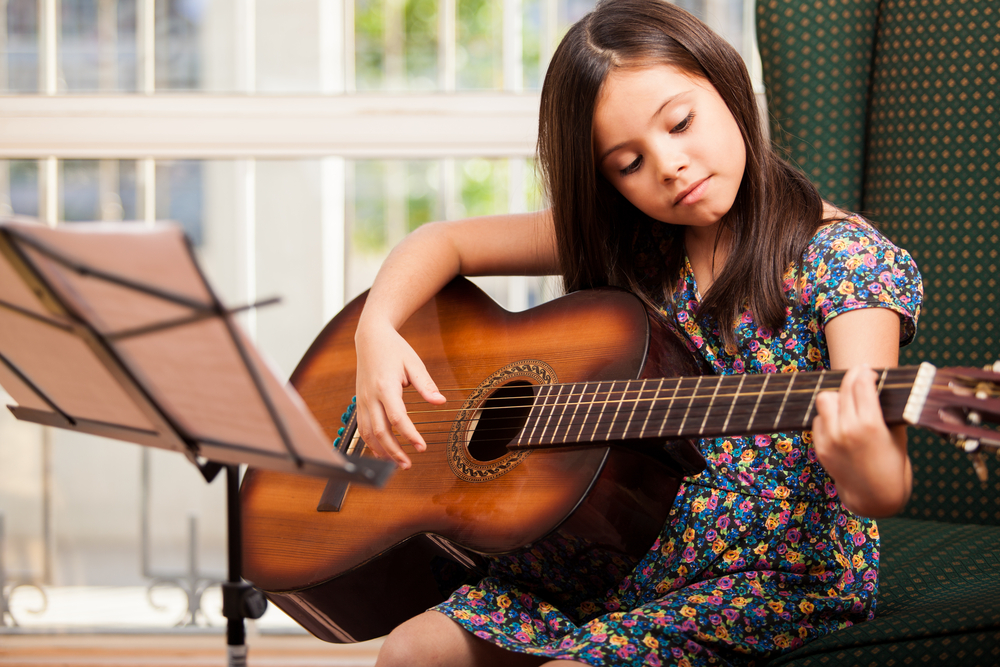Table of Contents
- The Role of Music in Early Childhood Development
- Introducing Music Through Play
- Creating Musical Environments at Home and School
- Integrating Music in Daily Routines
- Choosing the Right Musical Activities for Different Age Groups
- The Role of Technology in Early Music Education
- Fostering a Lifelong Love of Music
The Role of Music in Early Childhood Development
Music is uniquely capable of touching our deepest parts, a trait especially vital in early childhood development. Within the formative years, a music program Calabasas, CA, can enhance a child’s cognitive, social, and emotional frameworks. The neurological benefits are profound; music engages both brain hemispheres, promoting enhanced neural connections foundational for linguistic and mathematical skills.
Emotionally, music provides a medium through which children can identify and express feelings, fostering improved emotional intelligence. Participating in musical activities also helps hone social skills as children learn the principles of collaboration and cooperation. Cognitive research underscores how rhythm and melody can boost memory and concentration, supporting broader educational pursuits.
Introducing Music Through Play
The adage “learning through play” holds especially true when introducing music to young minds. Play transforms abstract musical concepts into concrete fun, making it easier for young children to grasp and engage with these ideas. Singing games seamlessly integrate learning and entertainment, while rhythmic exercises cultivate a sense of tempo and collaboration. Even simple interactions can plant the seeds for a lifelong love of music. Consider musical storytelling, a technique that involves narrating stories with the addition of musical elements. This not only enhances language skills but also makes narratives more memorable. As highlighted by recent research from USC Today, early musical engagement can significantly boost cognitive, emotional, and social development. Successful play-based music programs illustrate that children immersed in such playful yet educational environments often develop an intrinsic love for music, which can enhance their overall learning trajectory.
Creating Musical Environments at Home and School
Crafting an environment that promotes musical exploration is essential for nurturing a child’s interest in music. At home, this could involve dedicating a space where children can access a variety of instruments and different musical genres. Such exposure encourages natural curiosity and experimentation.
Schools, too, play an essential role in fostering musical environments. This can be achieved through child-accessible music labs that invite unrestrained participation. The impact of offering children space to engage with music freely cannot be overstated; it propels their interest further and provides an inclusive and soothing learning environment. By intricately weaving music into the architectural fabric of childhood spaces, parents and educators can inspire a genuine enthusiasm for music.
Integrating Music in Daily Routines
Seamlessly immersing music in daily routines can strengthen a child’s connection to the art form. Consider beginning the day with an upbeat song that energizes children for the activities ahead. Music can provide a soundscape for playtime or act as a timer, helping to make transitions between activities easier and more enjoyable. It can introduce a lively rhythm to routines such as mealtime or bath time, making them feel more engaging and less like chores. According to UCHealth, incorporating music into everyday life can help reduce stress, boost mood, and improve overall well-being, benefiting both children and caregivers. Music’s playfulness in routine structures can significantly alleviate the emotional climate, turning everyday tasks into joyful experiences. These small incorporations profoundly affect how children perceive their activities, naturally and beautifully embedding music into them.
Choosing the Right Musical Activities for Different Age Groups
To be most effective, the selection of musical activities should ideally align with the child’s age and developmental stage. Infants, for example, are most responsive to lullabies and gentle, rhythmic patterns that can soothe or stimulate as needed. Toddlers can engage with interactive songs encouraging imitation, hand movements, and simple dance steps.
More advanced preschoolers are ready to explore activities involving simple musical instruments, such as percussion or xylophones. These interactions refine fine motor skills and enhance rhythm recognition, which is pivotal for future learning. As children grow, progressively challenging musical activities keep their interest fresh, allowing them to deepen their appreciation and understanding of music over time.
The Role of Technology in Early Music Education
Technology has transformed approaches to early music education in the digital age, offering tools that ingeniously merge creativity and learning. While technology supplements traditional music learning, ensuring a harmonious balance between digital and hands-on experiences is essential. Apps and digital tools can supplement learning by providing interactive and engaging ways to explore music.
Innovative platforms offer children new avenues to express their musical creativity, fostering an interactive learning environment. As technology reshapes the music education landscape, it’s vital to appropriately guide children to maximize these resources’ educational benefits.
Fostering a Lifelong Love of Music
The ultimate reward of a comprehensive musical education in early childhood is its potential to foster a lifelong appreciation for the art form. Early exposure to music nurtures creativity, builds strong cognitive and emotional skills, and shapes a disciplined, well-rounded individual.
As children experience a wide range of musical genres and styles, they develop a broad appreciation for the art, which continues to grow throughout their lives. Cultivating this love early on ensures that music remains a cherished companion in their journey of growth and self-discovery. When nurtured with care, the musical foundation laid in childhood becomes a lifelong source of joy, creativity, and inspiration.


